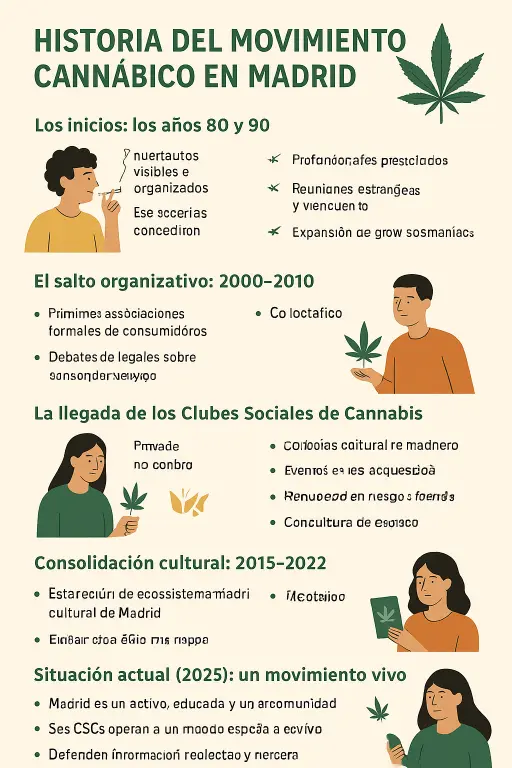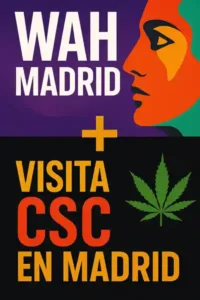Madrid is known worldwide for its art, cuisine, nightlife, and cultural diversity. But over the past few decades, the city has also become one of the most relevant hubs of the cannabis movement in Spain.
From early activism to the rise of modern Cannabis Social Clubs (CSCs), Madrid’s cannabis culture has evolved through community organization, legal debate, and a growing focus on wellness and responsible use.
In this article, we explore the history, milestones, and current state of the cannabis movement in Madrid.
The Beginnings: The 1980s and 1990s
The roots of Madrid’s cannabis culture can be traced back to the late 20th century. As social movements gained strength in Spain after the democratic transition, cannabis became part of broader conversations around civil rights and personal freedom.
During these early years:
- Small groups of consumers began organizing informally.
- Discussions around harm reduction became more common.
- Different activist collectives promoted a more tolerant approach.
- The first specialized grow shops started to appear.
- Public debates and demonstrations helped push cannabis into the cultural conversation.
These early efforts laid the foundation for the organizational structure that would come later.
The Organizational Shift: 2000–2010
Between the early 2000s and 2010, Madrid saw the first formal steps toward structured cannabis associations.
Key developments included:
- The emergence of early consumer associations advocating for safer environments.
- Public legal debates on personal consumption and shared cultivation.
- Growth of educational events and forums focusing on cannabis knowledge.
- Increased visibility thanks to advocacy groups and harm-reduction movements.
This era marked the beginning of cannabis as a civic, organized movement in the city.
The Rise of Cannabis Social Clubs (CSCs)
Between 2010 and 2015, Cannabis Social Clubs became a recognizable part of Madrid’s landscape.
What defined this stage?
- CSCs began operating as private, non-profit associations.
- Members focused on shared, responsible, self-regulated cultivation.
- Clubs adopted strict internal rules and required sponsor-based membership.
- Events, tastings, and educational activities became more common.
- The culture began blending wellness, harm reduction, and community building.
This period solidified CSCs as an alternative model aligned with Spain’s legal gray zone but grounded in responsibility and self-regulation.
Cultural Consolidation: 2015–2022
By the mid-2010s, cannabis had become part of Madrid’s cultural identity.
In this phase:
- Madrid developed a more stable and recognizable cannabis ecosystem.
- Clubs improved their organizational models, focusing on transparency and responsible operation.
- Cannabis increasingly appeared in wellness and cultural discussions.
- Educational content, workshops, and public debates became mainstream.
This was the decade in which the cannabis movement truly matured.
Current Landscape (2025): A Growing and Evolving Movement
Today, Madrid’s cannabis community is active, informed, and diverse.
Some defining traits of the current era include:
- CSCs operate with a strong focus on safety, education, and legal responsibility.
- The city’s cannabis culture is more connected, visible, and collaborative.
- Wellness, therapeutic use, and harm reduction are now central themes.
- Digital tools like Weedestiny’s map and app help users locate clubs, understand rules, and access verified associations.
The movement continues to evolve, driven by knowledge, community, and responsible values.
A Living Movement with a Strong Future
Madrid’s cannabis scene has transformed from grassroots activism to a community-oriented model focused on wellness, education, and responsible consumption.
As Spain continues debating the future of regulation, Madrid stands out as a city where the cannabis movement remains dynamic, informed, and culturally relevant — supported by tools that make it safer and more accessible for everyone.




